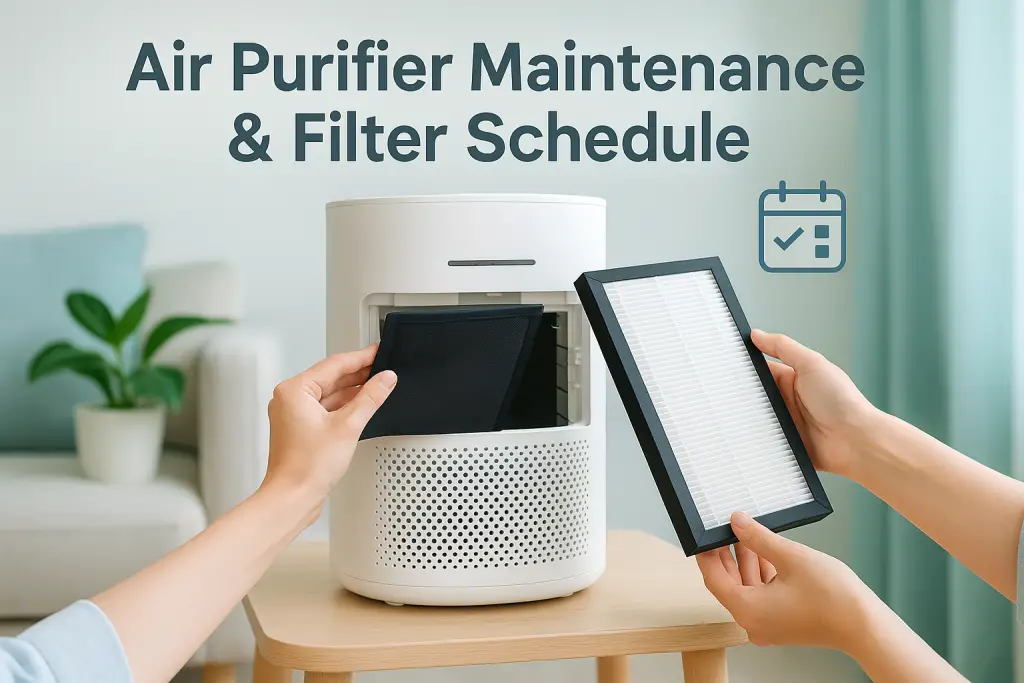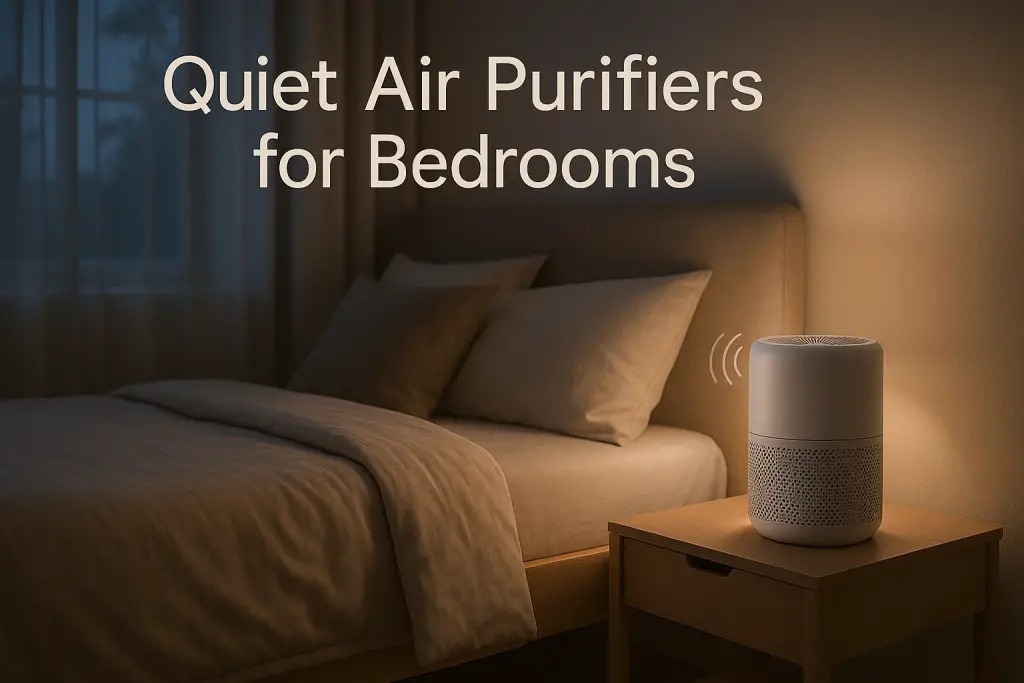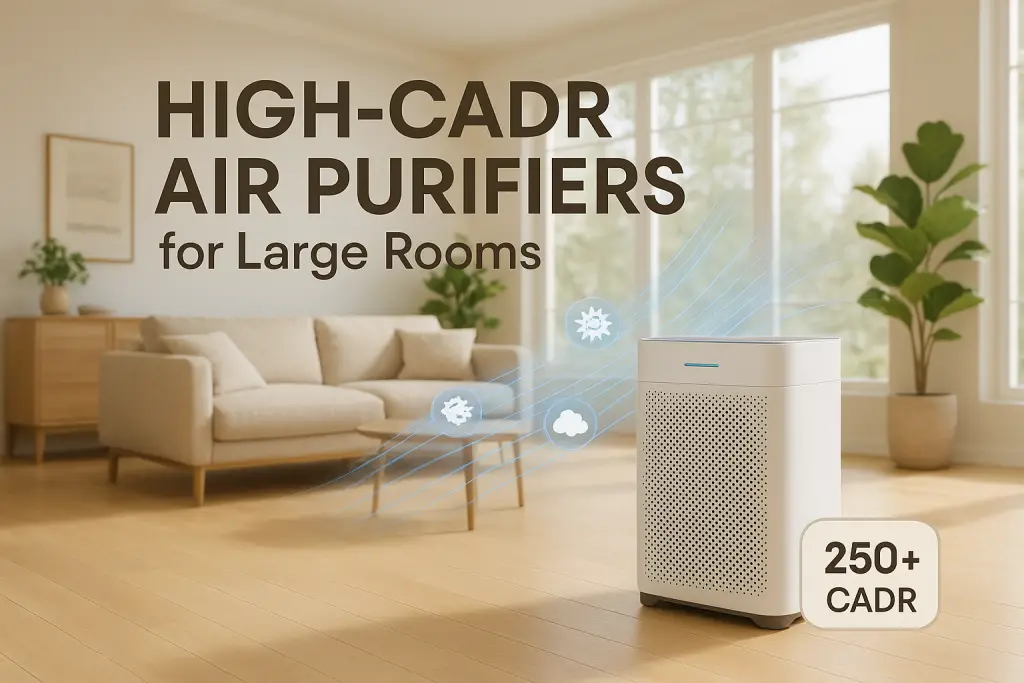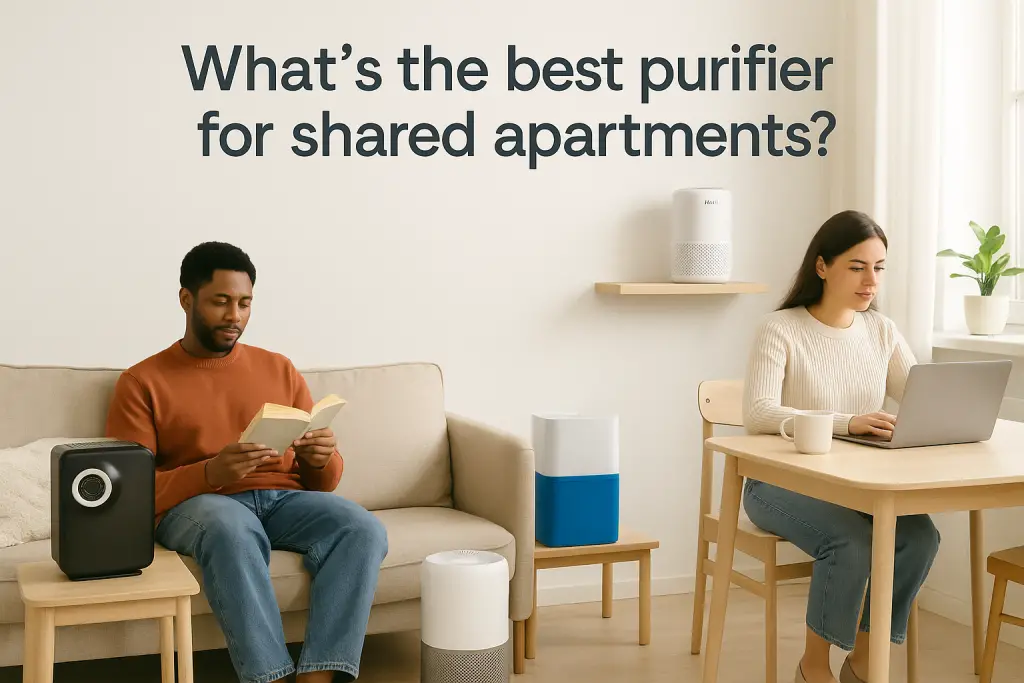Air purifier maintenance and filter replacement might seem complicated, but it doesn’t have to be. With proper care and a customized schedule, you can extend your air purifier’s life while ensuring it effectively removes airborne contaminants. This guide will help you create a personalized maintenance routine based on your unique environment and usage patterns, saving you money on premature filter replacements while maintaining optimal indoor air quality.
Understanding Your Air Purifier’s Filtration System
Before establishing a maintenance schedule, you need to know how your air purifier works and which components require regular attention. Most air purifiers contain multiple filter types, each with specific cleaning or replacement needs.
Common Filter Types and Their Functions
Modern air purifiers typically use a multi-stage filtration system:
- Pre-filter: Captures large particles like dust and hair, protecting inner filters and extending their lifespan. Usually washable and requires the most frequent cleaning.
- HEPA filter: Removes 99.97% of particles as small as 0.3 microns, including pollen, dust mites, and some bacteria. Cannot be washed and must be replaced periodically.
- Activated carbon filter: Absorbs odors, gases, and volatile organic compounds (VOCs) and formaldehyde through a process called adsorption. Must be replaced when saturated.
- Optional components: Some units include UV light systems, ionizers, or electrostatic precipitators for additional purification.
Understanding each component helps you prioritize maintenance and know which parts need cleaning versus replacement. Manufacturer guidelines provide baseline recommendations, but your specific environment often requires adjustments to these schedules.
Assessing Your Air Purifier’s Current Maintenance Needs
Before following a generic maintenance schedule, check your air purifier’s current condition to determine its actual needs. Regular assessment helps prevent both premature replacements and running with clogged filters.
Visual Inspection Guide
Start by unplugging your unit and examining each filter:
- Pre-filter check: Hold up to light. If light barely passes through or you can see thick dust accumulation, it needs cleaning.
- HEPA filter inspection: Look for discoloration from white/light gray to dark gray or brown, which indicates saturation.
- Carbon filter assessment: These typically don’t show visible changes but lose effectiveness over time. If odors persist despite the purifier running, the carbon filter likely needs replacement.
For homes with allergy or asthma sufferers, more stringent maintenance is crucial. Consider following a specialized allergies and asthma air purifier protocol that involves more frequent filter checks and replacements.
Performance Testing Methods
Beyond visual inspection, test your air purifier’s performance:
- Airflow test: Hold a tissue paper 6 inches from the air output. The paper should move strongly. Weak movement suggests clogged filters.
- Odor test: If your purifier struggles to remove common household smells, the carbon filter might need replacement.
- Noise assessment: Increased noise often indicates dust buildup in the fan or motor, requiring cleaning.
Creating Your Personalized Air Purifier Maintenance & Filter Schedule
Generic maintenance schedules rarely account for your specific environment. Create a customized timeline based on your unique conditions using these adjustment factors.
Environmental Factors That Affect Filter Lifespan
Start with the manufacturer’s recommended schedule, then adjust based on:
- Pet ownership: Each furry pet shortens filter life by approximately 20-30%. Multiple pets may require doubling your cleaning frequency.
- Household size: Each additional person reduces filter lifespan by about 10-15% due to increased activity and particle generation.
- Room location: Kitchen purifiers need more frequent maintenance than bedroom units. Purifiers in bedrooms, especially quiet air purifiers designed for sleeping environments, may have different maintenance needs than those in high-traffic areas.
- Smoking: Tobacco smoke dramatically reduces filter life. If your purifier helps with removing cigarette smoke, plan to replace filters 2-3 times more frequently.
- Allergies/asthma: Homes with allergy sufferers should replace filters about 25% more often to maintain relief.
- Construction/renovation: During home projects, check filters weekly and clean or replace as needed.
Sample Maintenance Schedule Template
Based on average household conditions:
- Weekly: Visual inspection of pre-filter
- Monthly: Pre-filter cleaning and exterior wiping
- Quarterly: Deep cleaning of washable components, fan inspection
- Every 6-12 months: HEPA filter replacement (sooner in challenging environments)
- Every 3-6 months: Carbon filter replacement (varies greatly based on odor/VOC levels)
For larger spaces, units with high CADR (Clean Air Delivery Rate) designed for large rooms may have different maintenance schedules due to the volume of air they process.
Air Purifier Placement Impact on Maintenance Frequency
Where you position your air purifier significantly affects how quickly filters accumulate particles. Consider these placement factors:
- Distance from pollution sources: Units placed near kitchens, pet areas, or doorways collect particles faster.
- Airflow obstructions: Keep at least 1-2 feet of clearance around the unit to prevent restricted airflow that forces the fan to work harder.
- Height placement: For dust control, lower placement is better. For pollen and other airborne allergens, elevated placement may be preferable.
- Room size match: An undersized purifier for your space will run constantly, collecting particles faster and requiring more frequent maintenance.
Comprehensive Air Purifier Cleaning Procedures
Regular cleaning extends filter life and maintains performance. Follow these detailed procedures for each component.
Pre-Filter Cleaning
- Unplug the air purifier and wait 10 minutes for any charged components to discharge.
- Remove the front panel according to manufacturer instructions.
- Locate and carefully remove the pre-filter.
- For washable pre-filters:
- Gently vacuum using a brush attachment to remove loose particles
- Wash with lukewarm water and mild soap if manufacturer-approved
- Rinse thoroughly to remove all soap residue
- Allow to dry completely (12-24 hours) before reinstallation
- For non-washable pre-filters:
- Vacuum gently with a brush attachment
- Replace if visibly damaged or excessively dirty
Housing and Fan Cleaning
- Wipe exterior surfaces with a damp microfiber cloth.
- Use a soft brush attachment to vacuum air intake and outlet grills.
- If accessible according to manufacturer guidelines, carefully clean fan blades with a soft cloth or cotton swab slightly dampened with alcohol.
- For control panels, use a slightly damp (not wet) microfiber cloth, then dry immediately.
For smart air purifiers with app control, reference brand-specific app guides for smart air purifiers to properly reset maintenance indicators after cleaning.
Special Cleaning Considerations for Different Environments
Different home environments require adjusted cleaning approaches:
- Pet households: Focus on pre-filter vacuuming 2-3 times more often to prevent hair buildup.
- Kitchen purifiers: Clean grease accumulation using a microfiber cloth slightly dampened with diluted dish soap, followed by a clean water wipe.
- High-humidity areas: Check for mold growth on filters and housing more frequently.
- Wildfire smoke exposure: After heavy smoke events, inspect all filters regardless of regular schedule.
You might also need specialized maintenance for purifiers in vehicles. Maintaining car cabin filters requires different habits than home units due to the concentrated space and variable exposure conditions.
Filter Replacement Guide: When and How to Replace Each Type
When cleaning is no longer sufficient, proper filter replacement ensures your air purifier continues working effectively. Here’s how to replace each filter type correctly.
Definitive Signs That Replacement Is Needed
- Pre-filter: Visible damage, holes, or impossible-to-remove dirt despite cleaning
- HEPA filter: Dark gray/brown discoloration throughout, noticeable odors from the filter itself, or reduced airflow despite pre-filter cleaning
- Carbon filter: Persistent odors in the room despite the purifier running, or reaching the manufacturer’s recommended timeframe
Step-by-Step Replacement Process
- Purchase the correct replacement filters for your specific model.
- Turn off and unplug the purifier.
- Open the unit according to manufacturer instructions.
- Remove old filters carefully to avoid dispersing trapped particles.
- Vacuum the internal compartment gently before installing new filters.
- Install new filters in the correct orientation (look for airflow direction arrows).
- Reset the filter replacement indicator if your model has one.
- Run the unit on high for 30 minutes in a separate room to clear any manufacturing residues from new filters.
Visual Guide to Filter Degradation Stages
Recognizing filter condition helps you make informed decisions about replacement timing:
- New filter: Bright white or original color, no visible particles
- Lightly used (25%): Slight discoloration visible primarily on intake side, still cleanable
- Moderately used (50%): Clear discoloration through approximately half the filter depth, may still respond to cleaning
- Heavily used (75%): Discoloration throughout, reduced airflow, replacement recommended
- End-of-life: Dark coloration throughout, possible odors, visible dust accumulation on air outlet, must be replaced immediately
Cost Optimization Strategies for Air Purifier Maintenance
Maintaining your air purifier doesn’t have to break the bank. These cost-optimization strategies can help you maximize performance while minimizing expenses.
Filter Extension Techniques
- Pre-filter protection: Regular vacuuming extends HEPA filter life by up to 30%
- DIY pre-filter options: Cut-to-size HVAC filter material can supplement existing pre-filters
- Rotation strategy: In multiple purifier homes, rotate the newest filters to bedrooms and older filters to less critical areas
OEM vs. Third-Party Filters
Comparing filter options:
- OEM advantages: Guaranteed fit, reliable performance, may preserve warranty
- Third-party advantages: Often 30-50% lower cost, sometimes higher quality materials
- Compatibility check: Verify dimensions and efficiency ratings before purchasing alternatives
Bulk Purchasing and Subscription Services
- Annual savings: Purchasing yearly filter supplies can save 10-20% versus individual purchases
- Filter subscriptions: Many manufacturers offer 10-15% discounts for automated delivery programs
- Multi-unit discounts: If you have several purifiers, contact manufacturers directly about bulk pricing
Troubleshooting Common Maintenance-Related Performance Issues
Even with regular maintenance, air purifiers can sometimes develop problems. Here’s how to diagnose and resolve common maintenance-related issues.
Reduced Airflow Problems
- Problem: Weak air output despite clean pre-filter
Solution: Check for HEPA filter saturation or fan obstruction - Problem: Airflow reduction shortly after filter replacement
Solution: Verify correct filter installation and orientation - Problem: Gradual airflow decline despite maintenance
Solution: Clean internal fan components or check for motor issues
Unusual Noises After Maintenance
- Problem: Rattling sound after filter change
Solution: Check for improper filter seating or loose components - Problem: High-pitched whine
Solution: Inspect fan for dust buildup on blades - Problem: Clicking or popping
Solution: Check for foreign objects in fan area or loose internal components
Error Codes and Indicator Problems
- Problem: Filter indicator light remains on after replacement
Solution: Reset indicator according to manual (typically holding button for 3-5 seconds) - Problem: Air quality indicator always shows poor quality
Solution: Clean sensor with compressed air or cotton swab - Problem: Unit turns off unexpectedly
Solution: Check for overheating due to restricted airflow
Seasonal Maintenance Adjustments and Calendar
Air quality challenges change throughout the year, requiring adjustments to your maintenance approach. This seasonal guide helps you adapt your schedule for optimal performance.
Spring (March-May)
- Focus: Pollen, mold spores, spring cleaning dust
- Adjustments: Check pre-filters weekly during peak pollen season
- Recommendation: Deep clean all washable components before pollen season begins
Summer (June-August)
- Focus: Wildfire smoke, ozone, increased dust from open windows
- Adjustments: During wildfire events, check filters every 3-5 days
- Recommendation: Keep replacement filters on hand during fire season
Fall (September-November)
- Focus: Fall allergies, leaf burning, heating system activation
- Adjustments: Clean pre-filters after turning on heating systems
- Recommendation: Replace carbon filters if summer wildfire exposure was significant
Winter (December-February)
- Focus: Indoor pollution from closed homes, fireplace use
- Adjustments: If using wood-burning fireplaces, check filters weekly
- Recommendation: Consider HEPA replacement mid-winter in cold climates
Environmental Impact and Sustainable Filter Practices
Air purifier filters create waste when improperly disposed of. Here’s how to minimize your environmental impact while maintaining effective air purification.
Filter Disposal Best Practices
- HEPA filters: Generally not recyclable but can be bagged and disposed of in regular waste
- Carbon filters: Some specialized recycling programs accept them for regeneration
- Pre-filters: Washable types significantly reduce waste stream
Environmentally-Friendly Alternatives
- Washable HEPA-type filters: Though slightly less efficient than true HEPA, they create less waste
- Longer-life filters: Some manufacturers offer extended-life filters that last 2-3 times longer
- Filter recycling programs: Check if your manufacturer offers a take-back program
Conclusion: Your Complete Maintenance Action Plan
With this comprehensive guide, you can now implement a personalized Air Purifier Maintenance & Filter Schedule that optimizes performance while managing costs effectively. Start by assessing your current filters, creating a customized replacement timeline based on your home’s specific conditions, and setting calendar reminders for regular maintenance tasks.
Remember that consistent maintenance not only improves air quality but also extends your air purifier’s lifespan and reduces long-term costs. By following the cleaning procedures and replacement guidelines outlined here, you’ll breathe easier knowing your air purifier is working at peak efficiency.
| Photo | Air Purifier Model | Best for | Price |
|---|---|---|---|

|
WINIX A231 Air Purifier | Asthma & Indoor Pollution | Check Price On Amazon |

|
Rabbit Air, A3 SPA-1000N Air Purifier | Pet Dander & Odors | Check Price On Amazon |

|
LEVOIT Air Purifier | Best Overall | Check Price On Amazon |

|
GermGuardian Air Purifier | Cigarette & Cooking Smoke | Check Price On Amazon |

|
Coway Airmega Air Purifier | New-borns | Check Price On Amazon |

|
BLUEAIR Air Purifier | Germ & Virus Control | Check Price On Amazon |






